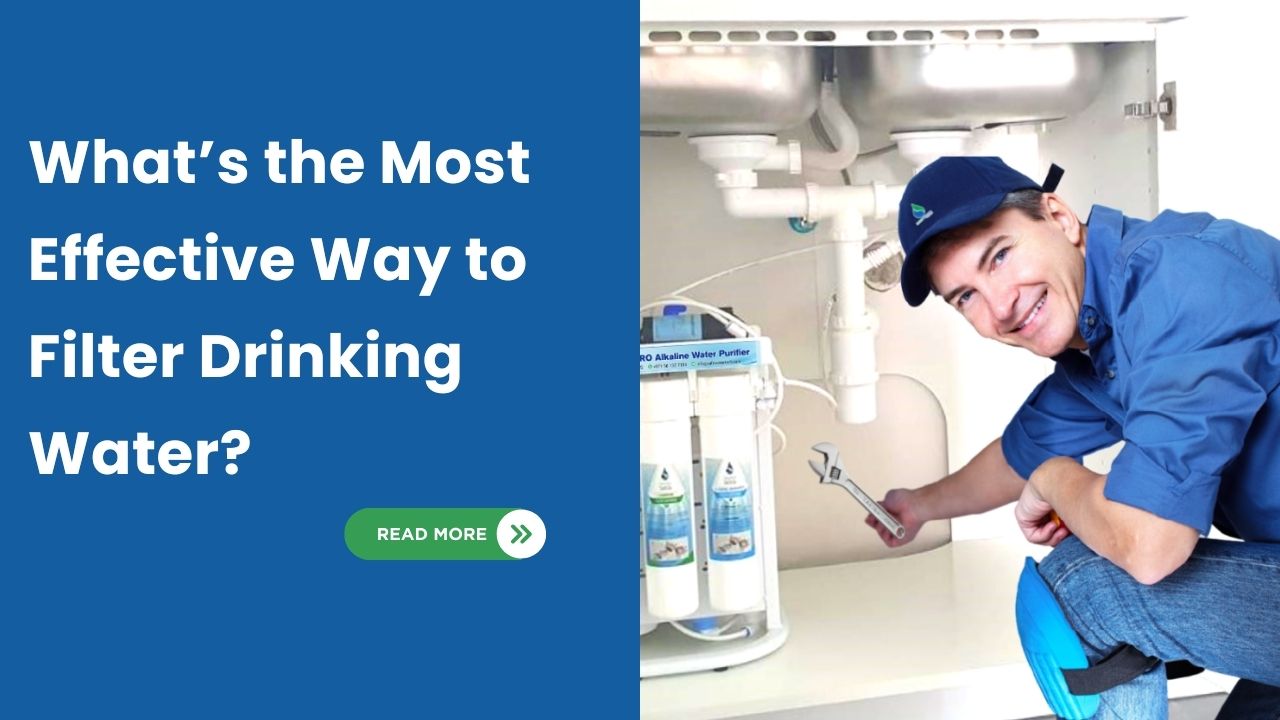When it comes to filtering drinking water, choosing the most effective method depends on the specific contaminants in your water supply and your filtration needs. Drinking water can contain a wide range of impurities, including bacteria, viruses, heavy metals, chemicals, and sediment, which can pose health risks if not properly filtered. Understanding the various filtration methods available and their effectiveness in addressing different types of contaminants is key to selecting the right solution for your home or personal use. Below, we’ll explore some of the most effective methods for filtering drinking water, including their advantages, limitations, and ideal uses.
1. Reverse Osmosis (RO)
Reverse osmosis (RO) is often considered one of the most effective methods for purifying drinking water. It uses a semi-permeable membrane to remove a broad range of contaminants, including dissolved salts, heavy metals (like lead and mercury), chemicals (such as pesticides), bacteria, and viruses. In an RO system, water is forced through the membrane under pressure, and the impurities are left behind while clean water passes through.
Advantages:
- RO systems are effective at removing a wide range of contaminants, making them suitable for people with concerns about water quality due to pollutants or hard water.
- By removing chlorine and other chemicals, RO systems can improve the taste and smell of your water.
- Once installed, RO systems typically require little maintenance beyond occasional filter replacement.
Reverse osmosis is ideal for areas with high levels of dissolved solids, chemicals, or contaminants like heavy metals, and it is particularly beneficial for households looking for the highest level of purification.
2. Activated Carbon Filtration
Activated carbon filtration is one of the most common and affordable water filtration methods. Activated carbon filters use a highly porous material to trap contaminants through adsorption. These filters are particularly effective at removing chlorine, volatile organic compounds (VOCs), pesticides, and odors, as well as improving the overall taste of the water.
Advantages:
- Activated carbon is especially good at removing chlorine and organic compounds that affect the taste and smell of water.
- Carbon filters are relatively inexpensive and available in various forms, including pitcher filters, faucet-mounted filters, and under-sink units.
- Activated carbon filters are easy to maintain, typically requiring only periodic replacement of the filter cartridge.
Activated carbon filters are a great choice for improving taste and removing common chemicals and chlorine from municipal water supplies. They are ideal for general-purpose use but may not be sufficient for purifying water with higher levels of harmful contaminants.
3. UV (Ultraviolet) Purification
UV water purification systems use ultraviolet light to destroy bacteria, viruses, and other pathogens in drinking water. UV light disrupts the DNA of microorganisms, rendering them inactive and unable to reproduce, effectively sterilizing the water.
Advantages:
- UV is highly effective at disinfecting water by eliminating harmful bacteria, viruses, and protozoa, including pathogens like E. coli and Giardia.
- UV systems do not require chemicals to purify water, making them an environmentally friendly option.
- UV purification systems work quickly, typically treating water instantly as it flows through the UV chamber.
UV systems are ideal for households with concerns about waterborne pathogens, particularly in areas where the water supply may be exposed to contamination. However, UV should be used in conjunction with other filtration methods to address other types of contaminants.
4. Distillation
Distillation is a process in which water is boiled to produce steam, which is then condensed back into liquid form. This method effectively removes a wide range of contaminants, including heavy metals, salts, bacteria, and viruses. Because most impurities have higher boiling points than water, they are left behind in the boiling chamber.
Advantages:
- Distillation removes a wide variety of contaminants, including both organic and inorganic substances.
- Distillation is highly effective at removing harmful microorganisms, including bacteria, viruses, and protozoa.
Distillation is ideal for situations where both microbial and chemical contamination are concerns. However, the slow speed and energy requirements make it better suited for smaller-scale or emergency uses rather than everyday water purification.
Conclusion:
The most effective method for filtering drinking water depends on the quality of your water supply and the types of contaminants you are concerned about. For comprehensive purification, reverse osmosis combined with activated carbon filtration or UV disinfection often provides the best results. If you’re primarily concerned with pathogens, UV purification is a great option. For areas with high levels of heavy metals or chemicals, reverse osmosis or distillation may be necessary. In most cases, using a multi-stage filtration system that combines different technologies offers the most effective and reliable water purification solution.
